NAM to Congress: Allow Manufacturers to Keep Innovating

The 21st Century Cures Act of 2016 and its 2021 follow-on, Cures 2.0, are providing a pathway toward potentially groundbreaking cures and treatments—but there’s room for even more improvement in the federal government’s handling of pharmaceutical innovation, the NAM said this week.
Now, Reps. Diana DeGette (D-CO) and Larry Bucshon (R-IN) are looking to build on the legacy of these two bills.
The background: The 21st Century Cures Act, introduced in 2015 by Rep. DeGette and former Rep. Fred Upton (R-MI) and signed into law the following year, aimed to speed up the development and delivery of medical innovation.
- The 2016 measure “ensured that federal agencies like the [Food and Drug Administration], the Centers for Medicare & Medicaid Services and the National Institutes of Health had the tools they needed to keep pace with and adapt to the tremendous advances being made by biopharmaceutical and medical device manufacturers,” said NAM Vice President of Domestic Policy Charles Crain.
- Cures 2.0, passed after the global pandemic, created the Advanced Research Projects Agency for Health, “a home within the federal government for high-risk, high-reward medical research.”
New medical advances: The face of medical innovation “has changed dramatically” in the past eight years, Crain pointed out, as we’ve seen the first-ever federal approval of gene therapy and the development of vaccines using mRNA technology.
What’s needed: The new landscape necessitates more congressional action, Crain went on, including:
- Continuing to embrace the new technologies that emerged from the COVID-19 pandemic like mRNA and other innovations;
- Modernizing federal agencies such as the FDA to keep up with these innovations; and
- “[E]nsuring the government’s processes for reviewing and approving new treatments are as innovative as the treatments themselves.”
Why it’s important: Biopharmaceutical manufacturers are economic powerhouses. In 2021, they:
- Accounted for $355 billion in value-added output to the U.S. economy;
- Contributed a total of nearly 1.5 million direct and indirect jobs; and
- Contributed $147 billion in labor income.
The Corporate Tax Rate, Explained
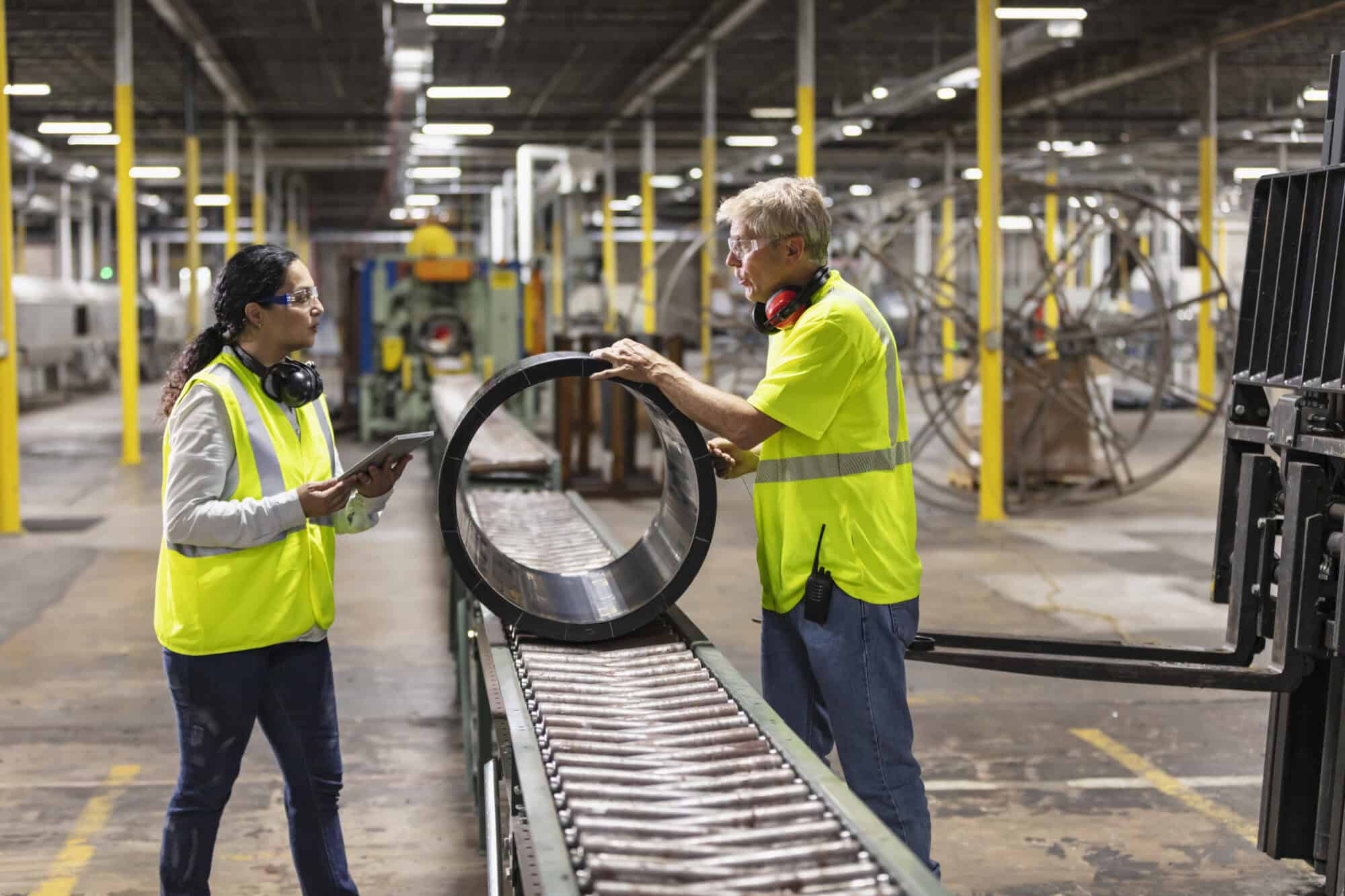
The NAM’s 2025 tax campaign, “Manufacturing Wins,” is focused on preserving tax provisions critical to manufacturing in the U.S. One of those is the corporate tax rate, which the 2017 tax reform lowered from 35% to a globally competitive 21%.
The NAM recently released a tax explainer on the current corporate rate, emphasizing why it’s crucial to U.S. manufacturing’s competitiveness on the world stage.
The background: Prior to 2017, the U.S. corporate tax rate was 35%, the highest among our peers in the Organisation for Economic Co-operation and Development and the third-highest rate in the entire world—making the U.S. an outlier and harming its ability to attract manufacturing investment.
- Tax reform lowered the corporate rate to 21%, aligning the U.S. with the average rate elsewhere in the OECD.
The benefits: Reducing the tax burden on manufacturers led to increased investment throughout the U.S., job creation, wage growth and overall economic expansion.
- In 2018, the year the lower rate took effect, manufacturers had their best year for job creation in more than two decades, creating more than 260,000 positions and increasing wages by 3%—the fastest pace in 15 years.
- NAM surveys conducted prior to tax reform found that nearly 80% of manufacturers were struggling with unfavorable business conditions like high taxes—a figure that dropped to just 12% following the reduction in the corporate rate.
What’s at stake: Although the corporate tax rate is not set to expire at the end of 2025, as other pro-growth provisions are, President Biden’s fiscal year 2025 budget called for an increase to 28%.
- This proposal would return the U.S. to one of the highest corporate tax rates in the developed world, resulting in fewer jobs, lower wages, less innovation and reduced investment in our communities.
What should be done: “Manufacturers are calling on Congress to preserve tax reform in its entirety—including the 21% corporate tax rate,” the NAM said.
- “Congress should maintain a globally competitive corporate rate—enabling manufacturers to continue leading on the world stage while driving innovation and job creation here at home.”
Tax Bill Scheduled for Thursday Vote
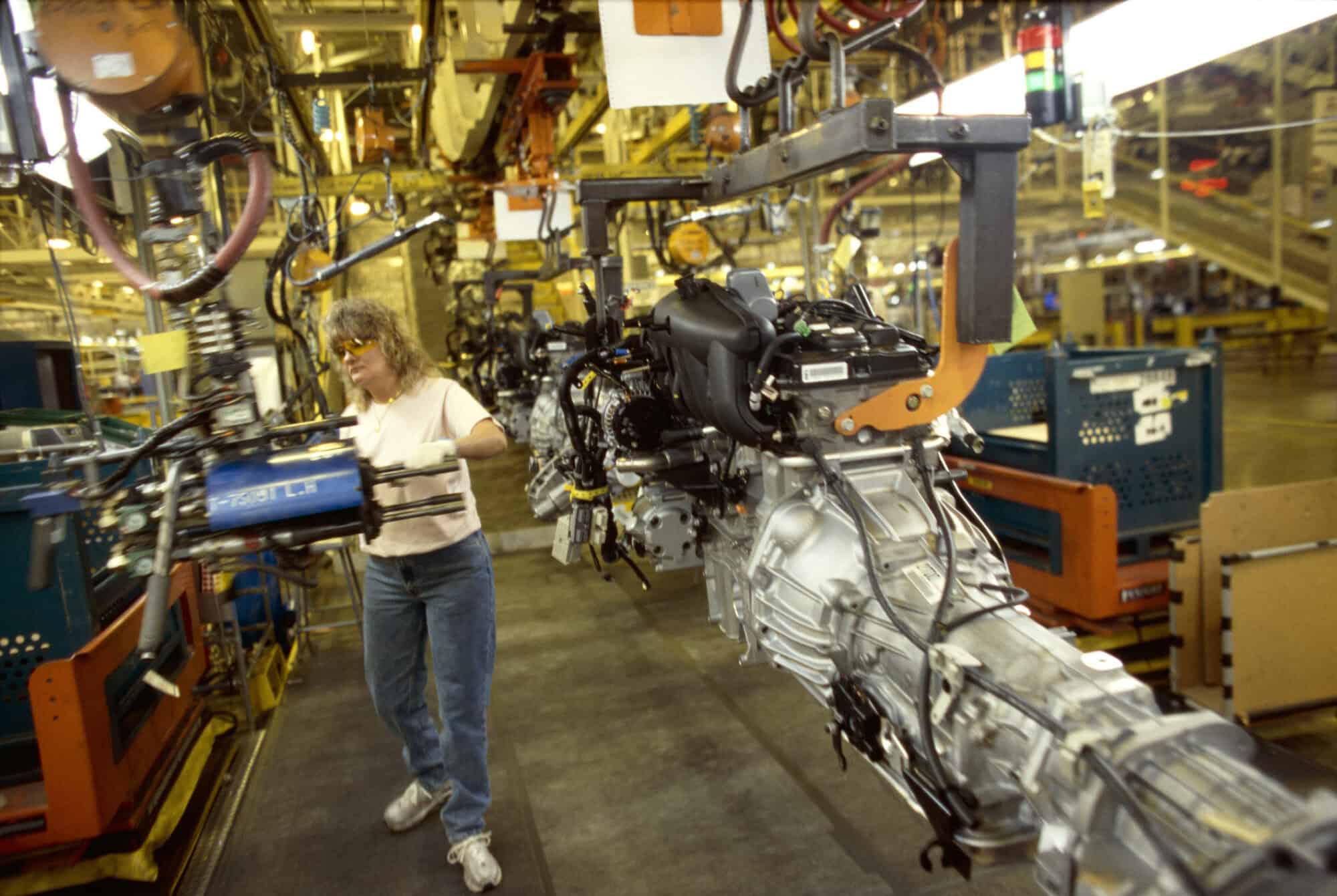
Senate Majority Leader Chuck Schumer (D-NY) has scheduled a procedural vote on a bipartisan tax package, though the bill’s fate remains uncertain.
What’s going on: The Tax Relief for American Families and Workers Act would restore expired tax policies that reduce the cost of manufacturers’ investments in R&D, equipment and machinery. Ahead of Thursday’s vote, the NAM called these policies “vital to manufacturing workers and America’s economic future.”
- Immediate R&D expensing: Prior to 2022, manufacturers in the U.S. could fully deduct their R&D expenses in the year those expenses were incurred. But in 2022, first-year R&D expensing expired, making R&D investments significantly more costly, particularly for small and medium-sized manufacturers.
- Enhanced interest deductibility: Also in 2022, a new standard took effect limiting the amount of interest manufacturers can deduct on business loans, making it more expensive for them to invest in growth and expansion.
- Accelerated depreciation: In 2023, 100% accelerated depreciation—which allows manufacturers to immediately expense the full value of their capital equipment purchases—began phasing down, meaning these vital investments are now more costly for manufacturers.
What to expect: Thursday’s procedural vote requires 60 votes in the Senate, a difficult hurdle.
What’s next: Immediate R&D expensing, enhanced interest deductibility and 100% accelerated depreciation are top priorities in the NAM’s 2025 tax agenda. As Congress prepares to address scheduled expirations of other policies from the 2017 tax reform next year, the NAM will continue to call for restoration of these important pro-growth incentives.
The last word: “Competitive tax policy is critical to manufacturers’ ability to compete on the world stage and create jobs here at home,” said NAM Vice President of Domestic Policy Charles Crain. “Congress should restore expired pro-growth tax policies and act to prevent even more devastating tax increases scheduled for 2025.”
Small Manufacturers: Save the Pass-Through Deduction
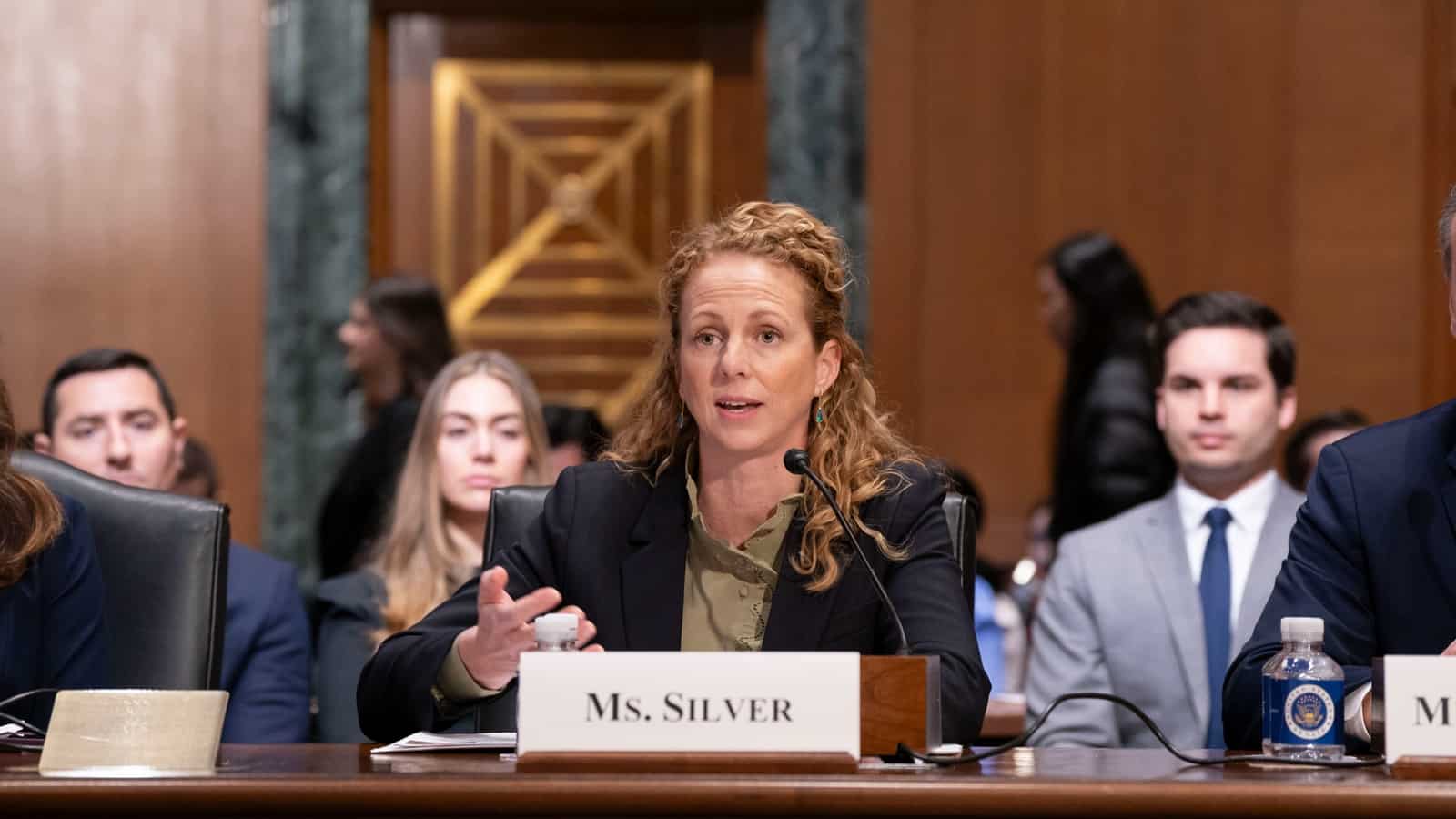
A critical tax deduction for small businesses is set to expire at the end of 2025, and manufacturers are sounding the alarm as part of the NAM’s “Manufacturing Wins” tax campaign.
Increasing the tax burden: Courtney Silver, president and owner of Concord, North Carolina–based Ketchie, recently emphasized the importance of the pass-through deduction. As an S corporation, Ketchie is one of the many small manufacturers that are eligible for this 20% deduction created by the Tax Cuts and Jobs Act.
- Silver, who chairs the NAM’s Small and Medium Manufacturers Group, warned that the expiration of this provision, along with the planned increase in individual tax rates, will “dramatically increase the tax burden on small manufacturers like Ketchie.”
Decreasing competitiveness: The disappearance of the pass-through deduction would make American companies less competitive on the world stage, predicted Austin Ramirez, president and CEO of Husco, a Waukesha, Wisconsin–based maker of hydraulic and electromechanical components for on- and off-highway vehicles.
- “The loss of the TCJA’s small business provisions would severely hamper our growth trajectory,” he said.
- “The combination of an increased tax rate and the loss of the pass-through deduction would be especially damaging, tilting the playing field against Husco and other pass-through manufacturers.”
Damaging supply chains: “Many small manufacturers are organized as pass-throughs, including most of [our] key suppliers,” said Chuck Wetherington, president of BTE Technologies in Hanover, Maryland.
- “A tax increase on pass-throughs would have a damaging, disproportionate impact on the manufacturing industry.”
Discouraging entrepreneurs: Competitive tax policy is personal for small manufacturers like Hannah Kain, who founded ALOM Technologies out of Fremont, California. “Like many immigrants before me, I came to the U.S. for opportunity,” Kain said.
- “Since I started the company in 1997, we have reinvested every dollar we made into growing the company. … I personally see how hard it is for entrepreneurs—and especially minorities—to start the type of company that must make big investments in equipment, space, inventories and so much more.”
Reducing growth: “[The 2025 tax hikes] will affect manufacturing businesses like ours and make it more difficult for us to hire more employees, raise wages and drive growth for our business,” said Lee Dougherty, a mechanical engineer at Madsen Steel.
- “We need our representatives in Congress to do their part by stopping these tax hikes so that we can continue to invest in our community and the future of our business.”
What you can do: Manufacturers willing to share their own stories about the need to preserve key tax reform measures can visit NAM.org/MfgWins or email the NAM’s tax team to get involved.
NAM Leads Effort to Reform PBMs

Middlemen created to manage the price of prescription drugs are instead driving up health care costs for manufacturers and manufacturing workers, the NAM told the House Committee on Oversight and Accountability on Tuesday, the same day the committee released a report on pharmacy benefit managers’ practices and held a hearing on the matter.
What’s going on: “PBMs’ business models have the direct effect of increasing health care costs at the expense of manufacturers and manufacturing workers,” NAM Vice President of Domestic Policy Charles Crain said in advance of the hearing, the latest in a series examining PBM practices.
Crain told lawmakers PBM reform legislation should include:
- “Increased transparency into PBMs’ business models and the many factors that contribute to a drug’s costs, formulary placement and the PBMs’ compensation;
- Rebate passthrough, which will ensure 100% of negotiated pharmaceutical savings are passed from the PBM to the health plan sponsor and workers; and
- Delinking of PBM compensation from the list price of medication.”
Report highlights: The committee’s report, the culmination of a 16-month investigation, is in line with the NAM’s longstanding advocacy. The report found that PBMs:
- Drive increased drug prices, which inflate PBM profits;
- Extract high rebates from biopharmaceutical manufacturers, often pocketing a significant portion of any savings rather than reducing costs for patients;
- Dictate whether and how medicines appear on formularies, which determine insurance companies’ coverage decisions and patients’ out-of-pocket costs;
- Steer patients toward drugs based on PBMs’ profit margins rather than patient costs; and
- Operate without sufficient transparency into their business practices.
What it all means: The committee “identified numerous instances where the federal government, states and private payers have found PBMs to have utilized opaque pricing and utilization schemes to overcharge plans and payers by hundreds of millions of dollars,” the report states.
- The report indicates that the present role of PBMs in prescription drug markets is failing and requires change, something the NAM has long advocated. “Congress and states must implement legislative reforms to increase the transparency of the PBM market and ensure patients are placed at the center of our health care system, rather than PBMs’ profits.”
The last word: “Manufacturers provide health care benefits so they can effectively attract and retain employees, to maintain a healthy and productive workforce and because they believe it is the right thing to do—but PBMs are a meaningful cause of the skyrocketing costs of health care,” Crain said.
- “Congress must enact reforms to the PBM system so that employers can negotiate, compete and achieve health care savings for their workers.”
Foxconn Shines a Light on Solar Energy

Manufacturers across the U.S. are taking new steps toward sustainability. For Foxconn—a consumer electronics contract manufacturer and solutions provider with U.S. headquarters in Milwaukee, Wisconsin—that effort is about to get a big boost.
The project: Foxconn is developing a massive field of 2,000 solar panels covering nearly eight acres of land around a retention pond at its Racine County campus in Mount Pleasant, Wisconsin.
- The panels are expected to go live at the end of July, when they’ll generate approximately one megawatt of power, which will be used to manufacture data servers.
- “That’s about 1,200 metric tons of carbon dioxide saved every year and enough energy to power about 300 American homes,” said Robert Schlaeger, head of U.S. government relations for Foxconn.
The big picture: The project—a partnership between Foxconn and utilities provider We Energies—is part of a bigger initiative from Hon Hai Technology Group in Taiwan.
- Hon Hai already uses green energy for about 40% of its power consumption across global operations. It has pledged to run wholly on green energy by 2040 and to achieve net-zero emissions by 2050.
- “This is really a top-down approach for the entire technology group under the leadership of our Chairman Young Liu,” said Schlaeger. “You can see how that trickles down to the things we try to achieve at a regional level and within those regions, down to the site level.”
The impact: In 2022, the technology group spent $75 million globally on 1,877 energy-saving projects. Schlaeger views sustainability projects such as the Foxconn solar field as an important signal of the company’s commitment.
- “As Foxconn grows and responds to market demand around the world or within the United States, renewable energies demonstrate the company’s commitment to environmental stewardship across supply chains—to our customers and to our communities,” said Schlaeger.
The business case: Investments like this one are important to the company’s long-term future, but they also matter to customers right now.
- “We have customers who want to know that they are employing contract manufacturers like us that are producing their product in a responsible manner,” said Schlaeger. “What type of energy are you using? Where does the energy come from? These questions are important to our customers—and we want to show them that whether you look to our aspirations as a whole, or down to the site, you can see our commitment to green energy.”
Daines, Smucker Staffers Talk Pass-Through Deduction

What’s going on: On Thursday, as part of its 2025 tax campaign, “Manufacturing Wins,” the NAM hosted Noelle Britton, deputy chief of staff for Rep. Lloyd Smucker (R-PA), and Caroline Oakum, tax counsel for Sen. Steve Daines (R-MT), in a virtual roundtable to discuss what’s being done in Congress to maintain the Section 199A pass-through deduction.
- The 20% deduction—created by the 2017 Tax Cuts and Jobs Act to help the many small and medium-sized businesses in the U.S.—is among several vital tax provisions scheduled to expire at the end of 2025. (Pass-throughs are companies whose profits are “passed through” to the owners, who then pay taxes on the entities’ incomes on their personal tax returns.)
- Both Rep. Smucker, who leads the House Ways and Means Main Street Tax Team, and Sen. Daines are leaders of legislation that would make the deduction permanent.
What they’re doing: Sen. Daines introduced the Main Street Tax Certainty Act in the Senate last May, while Rep. Smucker introduced the House’s version of the measure last July.
- The legislation would make the pass-through deduction permanent, providing much-needed certainty to the small and medium-sized manufacturers that have relied on it to increase investments and job creation.
What you can do: The House Ways and Means Committee Tax Teams are collecting companies’ perspectives on how the pass-through deduction has helped manufacturers and other businesses. Similarly, the NAM is collecting stories that can be used as part of our Manufacturing Wins tax campaign.
- Manufacturers willing to share their own stories about the pass-through deduction can email [email protected] or contact the NAM’s tax team.
Sen. Daines: How We’re Working to Avert a Tax Crisis

Manufacturing-critical provisions from 2017 tax reform are set to expire at the end of next year—unless Congress acts. As part of our 2025 tax campaign, Manufacturing Wins, the NAM recently interviewed Sen. Steve Daines (R-MT) to learn more about what these expirations would mean for manufacturers and what Congress is doing to prevent the resulting tax hikes.
Here’s the written interview.
NAM: Sen. Daines, many of tax reform’s pro-manufacturing policies expire at the end of 2025—including those with disproportionate impacts on small manufacturers, like the pass-through deduction and the individual income rate cuts. What is Congress doing to prevent these damaging tax increases?
Daines: The best defense against a looming tax hike is a good offense. Senate Finance Republicans have begun organizing to examine the [Tax Cuts and Jobs Act of 2017] policies expiring next year, and the pass-through deduction is at the top of that list. We can’t allow these provisions to expire and let America’s working families, manufacturers and small businesses face a $6 trillion tax hike. That will make manufacturers less competitive against foreign competition by stifling investment and crushing their bottom line at a time when they should be looking for ways to increase wages and invest in innovation.
NAM: You have introduced the Main Street Tax Certainty Act in the Senate and been a champion for pass-throughs since the TCJA was signed into law. How would your bill prevent tax hikes for pass-through manufacturers?
Daines: The Main Street Tax Certainty Act provides much-needed certainty to America’s small businesses by making the pass-through tax deduction permanent. This helps create good-paying jobs and grows the economy. If it’s allowed to expire, small businesses face an immediate 20% tax hike.
NAM: The Senate Finance Committee has established tax working groups to examine the TCJA expirations. What will be your focus as the committee begins examining these scheduled tax changes?
Daines: My focus is on making the Trump era tax cuts permanent, which will create a more stable, growing economy.
Heroes MAKE America Draws a Crowd
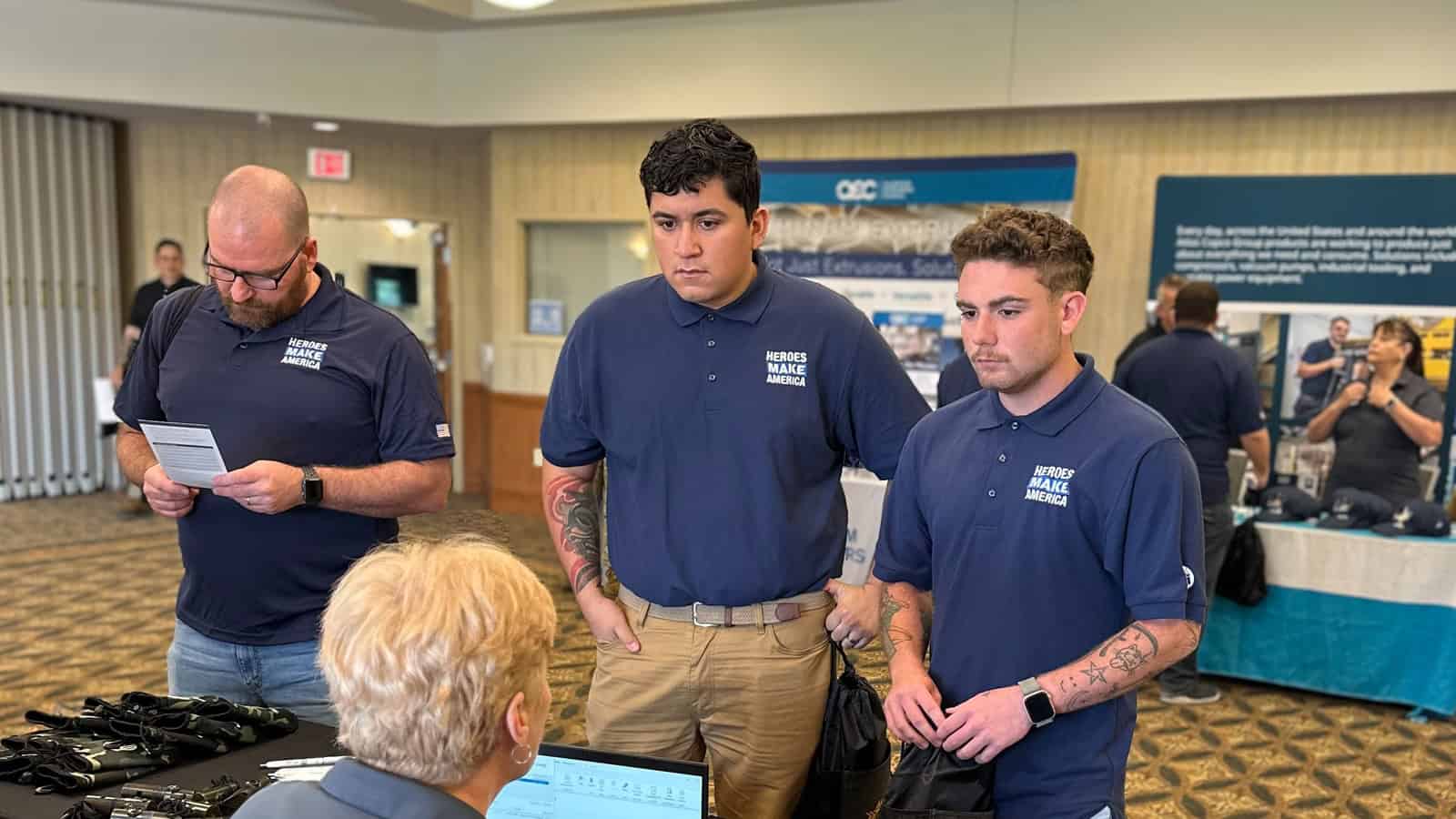
Nearly 100 veterans attended a manufacturing career fair at Fort Riley, Kansas, last week, including many who had prepared for their new careers via the Heroes MAKE America program (Kansas Biz News).
What’s going on: “The career fair and other events held by Heroes MAKE America and Manufacturing Institute [the NAM’s 501(c)3 workforce development and education affiliate] aim to grow the manufacturing industry’s workers for the advancement of modern manufacturing and offer programs, including informational sessions, career fairs, networking, career readiness, placement support and manufacturing tours.”
- More than 30 regional and national manufacturers had booths at the event.
How it helps: HMA—an MI program with a 90% graduate placement rate—offers career help to job seekers transitioning out of the military and into the civilian workforce. The aid is in the form of training and introductions to manufacturing leaders seeking employees.
- One military member who attended the fair said “she’s received help with resume writing, interviewing for jobs and how to translate military experience into tools you can use in the civilian world.”
- HMA, which hosts virtual career fairs throughout the year, also offers resources to employers. These include online training, courses and access to the research of the Society of Human Resource Management Foundation.
Why it’s important: The industry could create about 3.8 million new manufacturing jobs on net between this year and 2033, according to a new study by Deloitte and the MI.
- However, if the current manufacturing employee deficit is not shored up, approximately half of these jobs—or 1.9 million—could go unfilled.
What’s next: Interested employers can participate in an information session to be held later this month, where they can learn more about attracting, hiring and retaining military talent through upcoming career fairs and virtual hiring events.
The last word: “Members of the military community often possess valuable skills and qualities—such as discipline, teamwork, leadership and problem-solving abilities—that are in demand for manufacturing careers,” said MI President and Executive Director Carolyn Lee.
- “That’s why manufacturers are increasingly connecting with this top talent through an array of resources provided by the MI’s Heroes MAKE America initiative.”
NAM, Rep. Smucker Talk “Tax Armageddon”
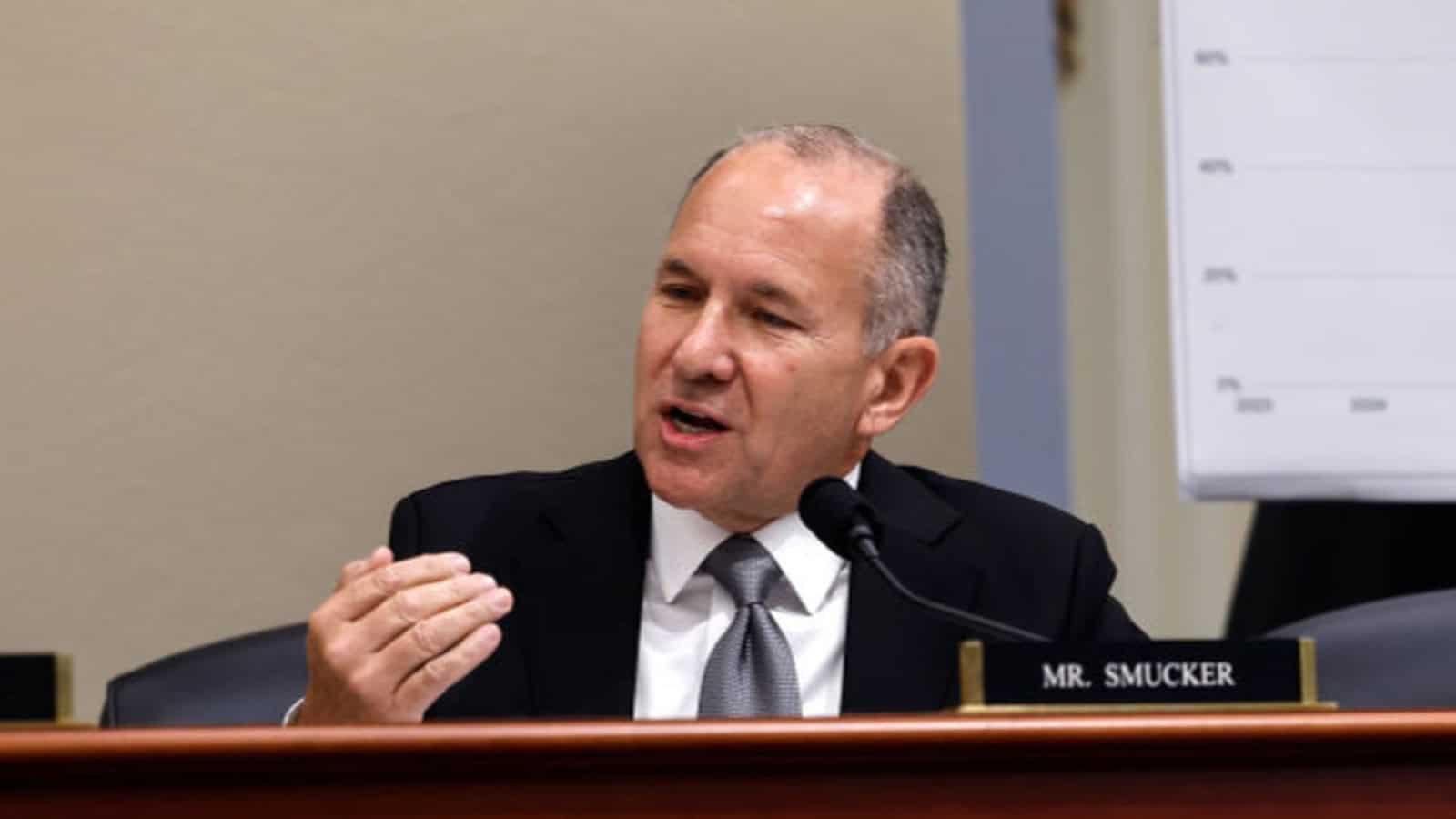
Manufacturers face a tax cliff in 2025, but there is still time for Congress to prevent devastating tax increases. By acting before the end of next year, legislators can preserve the 2017 tax reform and ensure manufacturers can continue creating jobs and driving economic growth across the country.
What’s going on: As part of Manufacturing Wins, the NAM’s 2025 tax campaign, the NAM asked Rep. Lloyd Smucker (R-PA) for a download on what Congress is doing to prevent “Tax Armageddon” for manufacturers.
- Smucker, chair of the House Committee on Ways and Means’ recently formed Main Street Tax Team, is a champion of the Section 199A pass-through deduction, one of the manufacturing-critical provisions set to expire at the end of 2025.
- Pass-throughs are companies whose owners pay tax on the business’s income on their personal tax returns—and most small and medium-sized manufacturers are organized as pass-through entities.
- The loss of the pass-through deduction and an accompanying increase in individual tax rates—both scheduled for the end of 2025—would be a one-two punch for small manufacturers.
Below is the written interview.
NAM: Congress is facing a Tax Armageddon next year, as crucial provisions from 2017’s Tax Cuts and Jobs Act are set to expire. As the leader of the Ways and Means Main Street Tax Team, what is your focus moving into next year’s debate?
Smucker: The Main Street Tax Team is tasked with examining the areas of the tax code that impact main street businesses. Looking ahead to what parts of the code are set to expire in 2025, one of the most important provisions our team is focused on is extending the Section 199A deduction for pass-through businesses. This 20% deduction was enacted as a part of the Tax Cuts and Jobs Act and helped create tax parity for millions of American businesses with their larger corporate competitors while incentivizing reinvestment back into their business and employees.
If Congress does not act, Section 199A will expire at the end of 2025, and main street businesses could face a 43.4% tax rate. Our tax team is working to build awareness of the pending tax hike if Section 199A expires, while laying the groundwork for making this important provision permanent by hearing directly from businesses on the impact this deduction has had on their ability to grow and increase productivity.
NAM: Most small manufacturers are organized as pass-throughs, which means that they pay tax on their owners’ returns. The scheduled increase in individual tax rates combined with the loss of the pass-through deduction—a 20% deduction that lowers these companies’ tax obligations—will mean that these businesses are the hardest hit by the 2025 tax cliff. What is Congress doing to protect small businesses from tax hikes?
Smucker: To protect businesses from devastating tax hikes, the Ways and Means Committee has gone on the road holding field hearings throughout the nation to hear directly from small business owners about how the Tax Cuts and Jobs Act improved their ability to compete and grow. During these field hearings, we’ve heard from many businesses, including manufacturers, how the TCJA helped improve the quality of life of hardworking Americans. We’re continuing to use this model by having each tax team host at least one field event to reach more communities.
The Main Street Tax Team will be heading to my district in the coming weeks to hear from Pennsylvania businesses about the importance of preserving Section 199A. I also encourage NAM members across the U.S. to share with their representatives what this provision, and other parts of the tax code, mean for their business. The public can share information on the impact of higher taxes directly with my colleagues on the Ways and Means Committee too by visiting our public comment portal.
NAM: Pass-through manufacturers generally pay tax at the top individual tax rate—currently 37%—but this bracket is scheduled to increase to 39.6% next year. Is your team examining how these rates impact pass-through businesses?
Smucker: Yes, in addition to the field event, my team members and I will be meeting with stakeholders in each of our districts throughout the rest of this year to discuss the impact higher taxes will have on our constituent’s families, businesses and communities. My team will also be hosting several D.C.-based roundtables with tax experts and economists to examine the impact of changes to the code.
NAM: Thank you for being a champion for manufacturing pass-throughs across the country. What can our members do to stay involved and be a resource for your tax team’s work?
Smucker: Continue to share your stories about how Section 199A has helped your businesses, and how tax hikes would be harmful. I strongly encourage NAM members to invite their representatives for site visits to your businesses so they can see firsthand the benefits of a competitive tax code. Finally, I’d close with a request to have NAM members ask their representatives to cosponsor H.R. 4721, the Main Street Tax Certainty Act, my legislation to make Section 199A permanent. I am working to build as much backing as possible for the bill heading into our tax reform discussions next year to send a signal that preserving this deduction is important.
